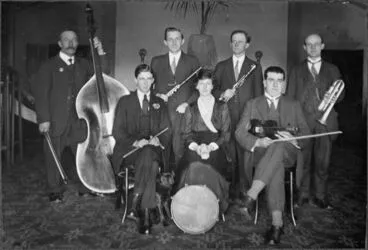Music in the community
A DigitalNZ Story by National Library Services to Schools
Imagine a world where sound could not be produced at the push of a button, where music could be experienced only through live performance. The text and images in this story look at (largely) 20-century popular musical groups, and activities in the New Zealand community.
Imagine a world where sound could not be produced at the push of a button, where music could be experienced only through live performance. Without TV, CDs and the internet, live music was a major force in bringing people together and maintaining their sense of identity, as the images below reveal. With so many cultures isolated from their homelands, this was especially true in NZ.
BANDS
Through many events in NZ history like the Temperance movement, the union movement and particularly the World Wars — bands of many kinds were formed. They fulfilled a meaningful role in funerals, weddings, celebrations and the ceremonies relating to war and peace. In days before logos existed, bands were a kind of logo for many groups. To understand the importance of music in these situations, we need to understand the context in which it functioned. For example, to appreciate the importance of a military band, we need to transport ourselves back, when soldiers would march through the streets to mark their departure for war.
Brass band
Alexander Turnbull Library
Temperance Ladies’ Brass Band
Manatū Taonga, the Ministry for Culture and Heritage
Members of a brass band gathered in the band rotunda in Taihape
Alexander Turnbull Library
Maori Agricultural College brass band, Hastings
Alexander Turnbull Library
"Kiama Band"
Palmerston North City Library
[Pipe Bands]
Museum of New Zealand Te Papa Tongarewa
NAME BANDS
As dance music and venues sprang up from the 1920s and through to the 50s and 60s, there emerged in New Zealand a significant number of name bands. This reflected a similar trend in other parts of the world, particularly America and Britain. Sometimes the name came from the leader/founder of the band or group, for example, the Bob Bradford Big Band. Other names emerged from family groups, e.g. The Tāhiwis and the Yandall Sisters. Even in the smaller more isolated regions name bands were very popular. Around Stratford, in the 1930s there were 4 dance bands operating: Vern Henry's Valencia Boys, Wright's Dance Band, Jack Hooker's Merrymakers and Bert Vinsen's Ambassadors. In one year alone Bert Vinsen's Ambassadors carried out over 300 engagements! Our research of music in the community found that there were so many name bands in New Zealand, we decided to highlight this as a separate category, which leads us to point out there are many instances of crossovers in these categories. Some of the music and groups could have equally, justifiably been placed in other sections. But just as is the nature of music itself, pigeon-holing and categorising is seldom exclusive. Music spills over from "art" music to ethnic, bi-cultural to rock, gospel to jazz, to infinity - and such is the joy of music!
Touring bands
Manatū Taonga, the Ministry for Culture and Heritage
Benton's Band, Group
Puke Ariki
Ted Marchant and his Kit Kat Dance Band
Alexander Turnbull Library
The Amateur Syncopaters
Alexander Turnbull Library
Simon Peels' Accordion Orchestra
Alexander Turnbull Library
Tui Teka and the Maori Volcanics
Manatū Taonga, the Ministry for Culture and Heritage
Moving Folk group.
Upper Hutt City Library
The Norm Cumming Trio, Group
Puke Ariki
The Quin Tikis at the Māori Community Centre, Halsey Street, 1961
Auckland Libraries
FAMILIES
Before the advent of recorded music, families were active in making music together, in ensembles and vocal groups of wide-ranging styles and instrumentation. The piano and other keyboard instruments, like the harmonium, were common in the family groups as was the guitar in the latter half of the 20th-century. Notice the unusual photograph of a family, complete with piano or keyboard instrument, playing in an outdoor setting!
James McAllister and family, outside, with musical instruments
Alexander Turnbull Library
Lydia and William Williams with their banjos, Carlyle Street, Napier
Alexander Turnbull Library
Making music, Tasman Street, Wellington, 1964
Manatū Taonga, the Ministry for Culture and Heritage
McKechnies Christmas Party
Puke Ariki
Maori Youth Club Christmas party, Whakatane
Alexander Turnbull Library
The Blerta family
Alexander Turnbull Library
Horohoro Maori Training Farm, 1966
Archives New Zealand Te Rua Mahara o te Kāwanatanga
Henare Gilbert and family at their home in Stokes Valley
Alexander Turnbull Library
Edith Hotter
Puke Ariki
SCHOOL MUSIC GROUPS
Music groups in schools reflect the interests and availability of instruments, teachers and performers in each school community. Vocal groups are many and varied. Instrumental groups range from traditional orchestras (violins, violas, cellos, double basses, flutes, oboes, clarinets and brass) through to recorder groups, percussion groups and general miscellaneous groupings made up of whatever players and instruments were available in the school.
Group of school students from Ahipara School, playing musical instruments
Alexander Turnbull Library
St Johns Bosco Choir
Puke Ariki
Wellington Girls College choir and string ensemble - Photograph taken by Ian Mackley
Alexander Turnbull Library
Recorder class
NZEI Te Riu Roa (New Zealand Educational Institute)
Karori Normal School choir, 1989
Manatū Taonga, the Ministry for Culture and Heritage
Wellington Girls College pupils rehearsing - Photograph taken by Melanie Burford
Alexander Turnbull Library
Upper Hutt College Concert & Jazz Bands 1997
Upper Hutt City Library
Heretaunga College band 'Mindless Creation'.
Upper Hutt City Library
At the Logen Campbell Kindergarten in Auckland, the teacher leads her class in a music lesson
Archives New Zealand Te Rua Mahara o te Kāwanatanga
ETHNIC MUSIC GROUPS
NZ is made up of people who emigrated from many countries - Scotland, Ireland, Holland, Dalmatia, Scandinavia, Croatia and many more. Active participation in music is one of the strongest ways of retaining a sense of cultural identity within their new country.
Scandanavian choral singers
Alexander Turnbull Library
At Puhoi, Rodney district
Alexander Turnbull Library
Wellington Highland Band
Alexander Turnbull Library
Fijian women performing at the 7th Festival of Pacific Arts, Apia, Samoa
Alexander Turnbull Library
School music festival, Otara, 1988.
Auckland Libraries
Inaugural Tarara Day, Henderson, Auckland, 1999
Manatū Taonga, the Ministry for Culture and Heritage
Anuanua, Pasifika
Manatū Taonga, the Ministry for Culture and Heritage
SOLO
The need to express ourselves through performing solo was as strong in earlier times as it is today. Our collection shows a great variety of performers, their instruments and the physical environment where the music is being performed. We see a Māori girl playing a Jew's harp, contrasted with a more traditional performer at the pipe organ. There is a great range of contrasting instruments and players within this category of solo performers.
Margaret Cooper with Chappell piano
Alexander Turnbull Library
Maori girl playing a Jews Harp
Alexander Turnbull Library
Matiu Te Huia Keenan
Puke Ariki
Woman musician
Museum of New Zealand Te Papa Tongarewa
"Cool jazz"
Auckland War Memorial Museum Tāmaki Paenga Hira
Photograph [Jim McKelvie]
Mataura Museum
MODERN GROUPS
Modern groups are defined here as those that evolved from the 1920s, playing jazz, swing, Dixieland, big band, rock, pop, punk, reggae and hip hop. The entertainment industry had a lively following in NZ, influenced largely by the music of America. Recording technology made it possible for local musicians to hear the new music and transcribe it for their own bands. People went to cabarets, dance halls and 'dine and dance' venues. Larger bands were often featured as the highlight of these venues. The 'dine and dance' culture died off in the 1960s when recorded music, cheaper than hiring live musicians, took over this environment to a large extent. At the same time, the emergence of rock and pop concerts in larger venues, which generated more money, replaced the more intimate 'dine and dance' environment.
The birth of Kiwi rock 'n' roll
Manatū Taonga, the Ministry for Culture and Heritage
The Drifters (band) : photograph
Wairarapa Archive
Walter Smith's Jazz Band, around 1927
Manatū Taonga, the Ministry for Culture and Heritage
'Cruze', Band
Puke Ariki
Suburban Reptiles
Alexander Turnbull Library
Dread, Beat & Blood
Alexander Turnbull Library
Upper Hutt Posse - Photograph taken by John Nicholson
Alexander Turnbull Library
Riot 111 – subversive radicals
Manatū Taonga, the Ministry for Culture and Heritage
Straitjacket Fits - Photograph taken by Tony Mott
Alexander Turnbull Library
MĀORI MUSIC
Traditional Māori music is inseparable from Taha Māori, the Māori way of life. Music is interwoven into the total fabric of Tikanga Māori. Karakia, waiata, karanga, haka - all are integrated into life celebrations and events.
Later Māori music shows the European influence. Often, Pākehā music was adapted by Māori, who replaced existing texts with their own. For example, the beautiful song "Tama Ngā Te Marie", is originally an Anglican hymn while Now Is the Hour sung by Ana Hato has been adapted from the original, in two ways. One textually, two, rhythmically.
Later still, popular modern music showed the influence of traditional Māori music: Emma Paki, Moana and the Moahunters, Dalvanius, Howard Morrison and the Howard Morrison Quartet, Bo and Bic Runga, to name a few. This fusion of European and Tāngata Whenua has produced music which is distinctive and unique.
The Otaki Maori Band
Auckland Libraries
Maori Concert Party, Model Pa, Rotorua, N.Z.
Auckland Libraries
Kīngitanga fife-and-drum band, Waahi,1902
Manatū Taonga, the Ministry for Culture and Heritage
Maori Battalion choir, 1945
Manatū Taonga, the Ministry for Culture and Heritage
Kapa haka performers
Auckland Libraries
Members of the Ole Maimoa Orchestra of the Maori Agricultural College, Hastings
Alexander Turnbull Library
Images of Maori Hi-Five and their welcome at the Ngati Poneke Young Maori Club, Wellington
Alexander Turnbull Library
Opunake Racecourse - Ratana bands
Alexander Turnbull Library
Howard Morrison quartet
Manatū Taonga, the Ministry for Culture and Heritage
Rappers for a 'Code War' youth event in the Civic Hall, promoted by local radio W'SUP FM.
Upper Hutt City Library
Ngāti Poneke kapa haka
Christchurch City Libraries
Moana and the Moahunters
NZ On Screen
CHORAL MUSIC
From the earliest days of European settlement in New Zealand, communities have formed choirs. Large choirs, for example, the Royal Christchurch Musical Society, had a membership of up to two hundred singers. These choirs are divided into four sections: Soprano - high female voice; Contralto - low female voice; Tenor - high male voice; Bass - low male voice. As well as large choirs, there are many women's choirs, male voice choirs, and smaller mixed (male and female) choirs, which sometimes specialise in a particular genre of music, for example, Baroque, or Contemporary, or Gospel music. There are choirs of every culture, including Māori (concert parties, Kapa Haka) and Samoan. Many of our finest singers, composers and musicians have had significant music education through their involvement in school, church, and community and cultural choirs. Our New Zealand Youth Choir is one of the leading youth choirs in the world. New Zealanders love to sing!
Wanganui Christ Church Choir
Alexander Turnbull Library
Students (choir members) Queen Victoria School
Auckland War Memorial Museum Tāmaki Paenga Hira
The Waiata Maori Choir
Auckland War Memorial Museum Tāmaki Paenga Hira
Church choir
Alexander Turnbull Library
Dunedin Choral Society: 1947
Manatū Taonga, the Ministry for Culture and Heritage
Putiki Maori children's choir
Alexander Turnbull Library
Carols by Candlelight at Harcourt Park, 1994.
Upper Hutt City Library
New Zealand: Wanganui Collegiate School
Museum of New Zealand Te Papa Tongarewa
MILITARY BANDS
Military bands play a huge part in the history of NZ culture. Formed originally for the purposes of military and the state, they have retained their significance in society on occasions such as ANZAC day and military tattoos. Apart from the pomp and circumstance that these bands provided, they once held a role of profound meaning, keeping spirits high and soldiers marching, in the daunting face of war. There are three main categories of the military band: brass band, concert band and swing band: The brass band consists of brass and percussion. Rather than the trumpets and French horns of the orchestra, it involves cornets, tenor horns, baritones and euphoniums. The brass band movement has educated some of NZ's foremost musicians. The Concert band, also known as the Symphonic band, is made up of woodwind, brass, percussion and double basses. Like brass bands, concert bands can march for parades but are better suited to the concert hall. Swing bands consist of four sections: trumpets, trombones, saxes and rhythm and often feature soloists. They evolved during WWII, with the Glenn Miller Band. At this time musicians were sent overseas to entertain the troops.
Armed constabulary fife-and-drum band
Manatū Taonga, the Ministry for Culture and Heritage
Christchurch Bicycle Band, 1898
Manatū Taonga, the Ministry for Culture and Heritage
Military band member with helicon
Alexander Turnbull Library
Brass band in [Samoa] : photograph
Wairarapa Archive
Brass band at Trentham Military Camp
Alexander Turnbull Library
Military parade with brass band, Willis St., Wellington
Alexander Turnbull Library
Military Service, World War II; band; in Main Road South, near Trentham?
Upper Hutt City Library
ORCHESTRAL GROUPS
Orchestral performances were held in New Zealand from the 1840s, with the first full professional orchestra formed in 1906 for the New Zealand International Exhibition. A national orchestra was established in 1946, and grew to be locally and internationally successful. Other professional orchestras flourished in the main centres.
Source: Orchestras, Te Ara - the Encyclopedia of New Zealand
Wellington Youth Symphony Orchestra
Alexander Turnbull Library
School orchestra
NZEI Te Riu Roa (New Zealand Educational Institute)
Masterton Orchestra
Wairarapa Archive
Exhibition orchestra
Manatū Taonga, the Ministry for Culture and Heritage
Centennial Symphony Orchestra
Manatū Taonga, the Ministry for Culture and Heritage
Movie theatre orchestra
Palmerston North City Library
National Youth Orchestra
Alexander Turnbull Library
Maori Agricultural College's Ole Maimoa Orchestra, Hastings
Alexander Turnbull Library
Music in the community text credit: Dorothy Buchanan and Vivienn Reid.
This story was curated and compiled by Te Puna Mātauranga o Aotearoa | National Library of New Zealand, Services to Schools staff, 2020.

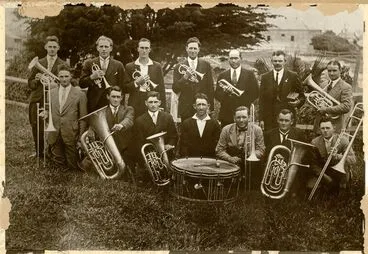
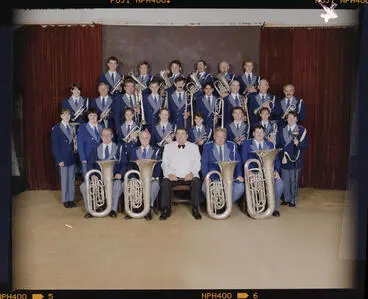

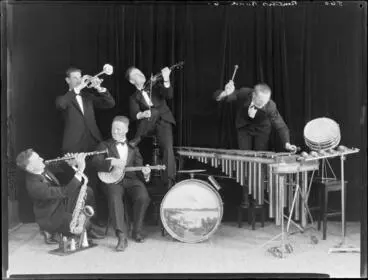

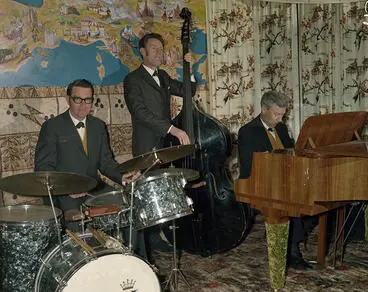
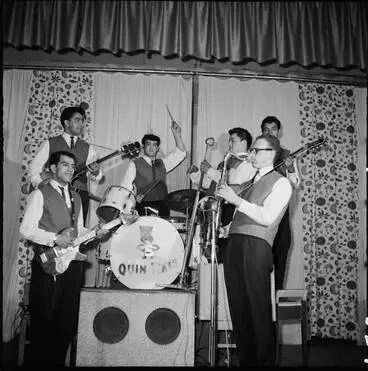

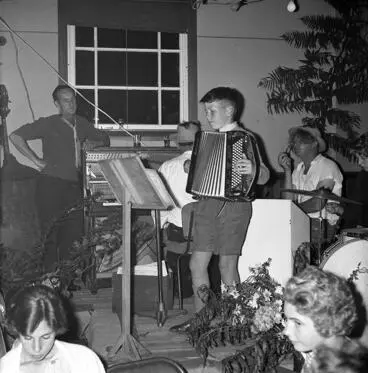
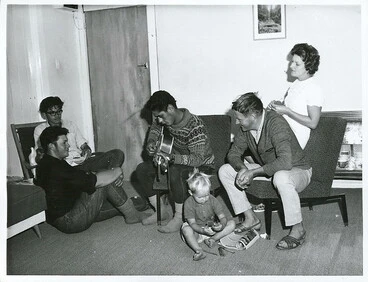
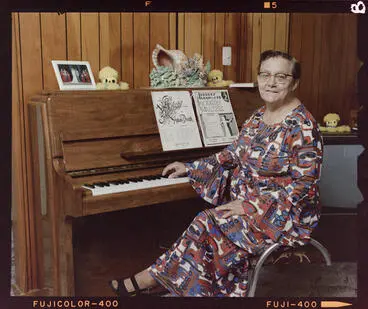
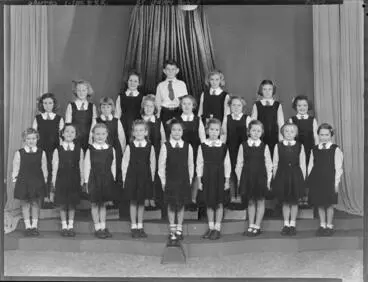
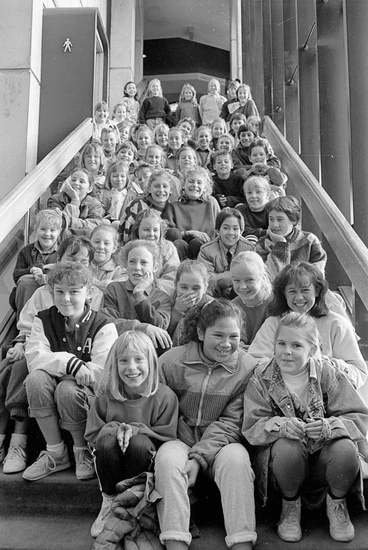
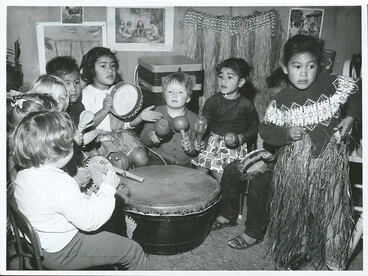
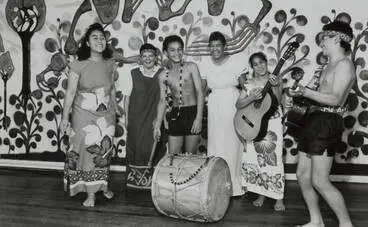


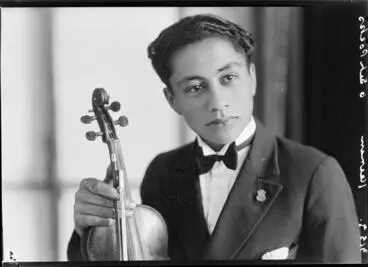
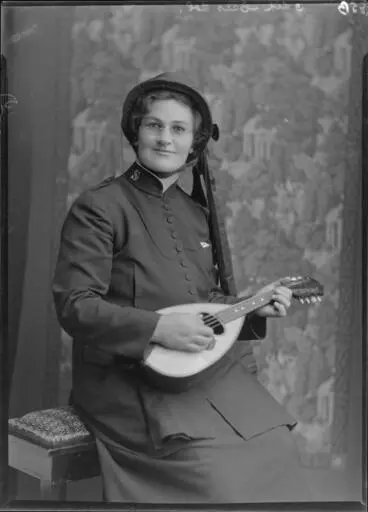
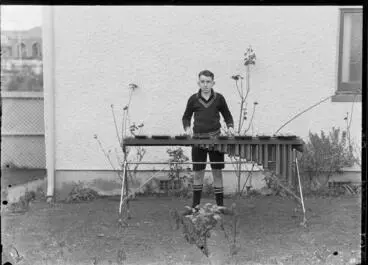
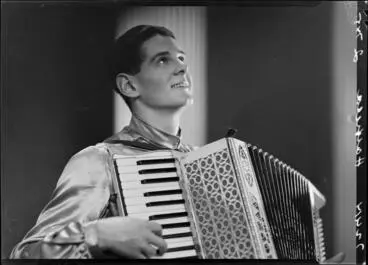

![Photograph [Jim McKelvie] Image: Photograph [Jim McKelvie]](https://thumbnailer.digitalnz.org/?resize=770x&src=https%3A%2F%2Fimages.ehive.com%2Faccounts%2F4033%2Fobjects%2Fimages%2Fvpeg8r_8l6t_l.jpg&resize=368%253E)
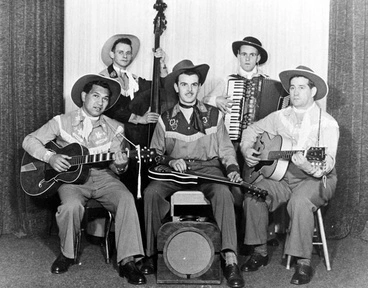


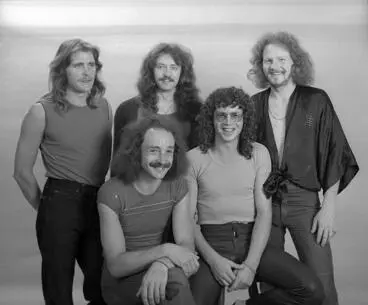
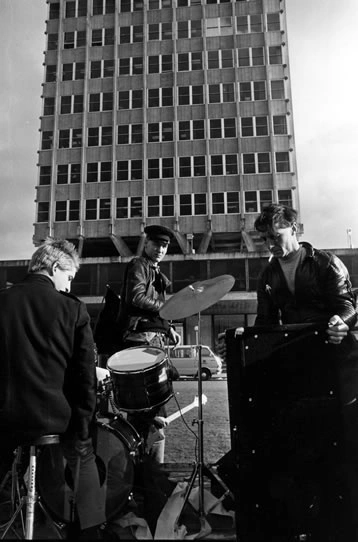
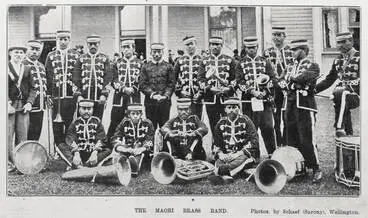
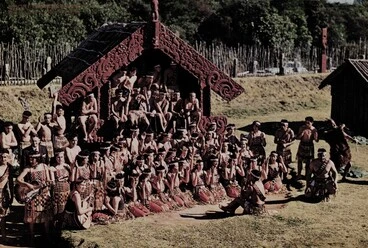

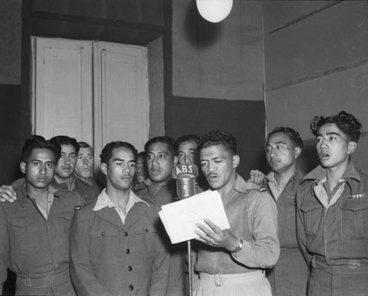
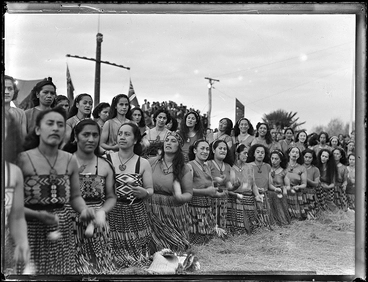
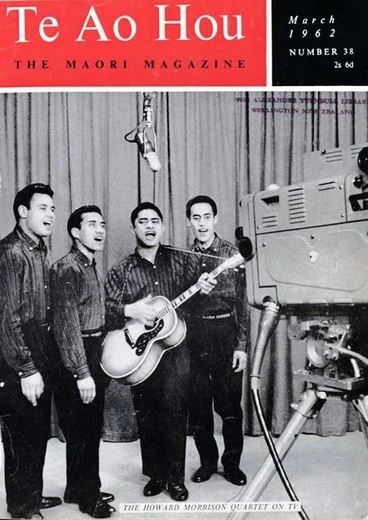
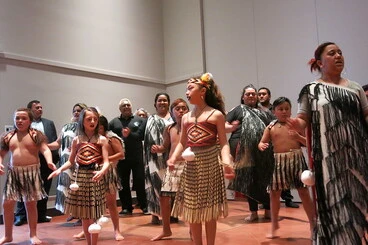





![Brass band in [Samoa] : photograph Image: Brass band in [Samoa] : photograph](https://thumbnailer.digitalnz.org/?resize=770x&src=https%3A%2F%2Fstspydusproduction.blob.core.windows.net%2Fsmartlive-mp-pub%2Fa0b1e13a-cfa8-4c6a-9f89-70e24bf81a4d_lt.jpg&resize=368%253E)



